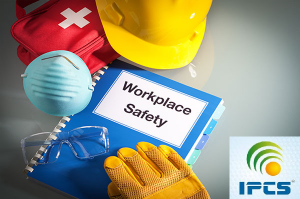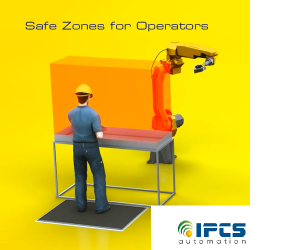 Safety is not to be taken for granted. It is inherently tied to the long-term success of each project and every client. Safety comes in multiple varieties and is multi-level. Operator, consumer/customer, product/process, equipment, and environment includes different levels of safety. Diligence study is needed for each level. Understanding the unique parameters of the project and the measuring success that bound the work is all required. All the levels will be described in detail. It includes highlighting the role of the integrator and the value delivered to the project in the safe and efficient process and outcome of the work.
Safety is not to be taken for granted. It is inherently tied to the long-term success of each project and every client. Safety comes in multiple varieties and is multi-level. Operator, consumer/customer, product/process, equipment, and environment includes different levels of safety. Diligence study is needed for each level. Understanding the unique parameters of the project and the measuring success that bound the work is all required. All the levels will be described in detail. It includes highlighting the role of the integrator and the value delivered to the project in the safe and efficient process and outcome of the work.
Operator safety

Focusing on a safe project, operator safety is commonly thought of as the first feature. People are the most flexible and adaptable assets of any organization. They are the biggest variable considering any production system. Manufactures should pledge to protect and safeguard the well-being of maintenance teams and machine operators who work around the automated equipment they design and deliver. Financial, emotional, technological and other losses and damages occur if any preventable accidents and injuries suffered when operating systems designed and integrated by experts. Therefore Priority should go for prevention. The human factors in this field are primary. Hence great lengths are pursued to ensure that the people closest to these automated processes are trained, protected. They should be equipped for the safe performance of their tasks, interacting with all kinds of sophisticated equipment and products
The system integrator should anticipate the scenarios that could cause risk and harm to people. Thereby such failures can be avoided and prevented. Techniques that protect workers in confined spaces or that require lock-out/tag-out efforts to de-energize equipment have become standard best practices that are very well-known
Consumer safety
The client’s objective is to produce a product that itself must be safe and accepted by the market with confidence and trust. The output of an automation system is directly proportional to the quality, integrity, and veracity of its design, fabrication, and operation. Processes should be free of known deficiencies, incorporating best-practice outcomes in design. All reasonable precautions adopted is to safeguard the end user. Control System Integrators Association (CSIA) ensures that the way the integration business is run is auditable, audited and certified to a set of standards. They are established to the integrity of the processes and protect the end user
Product and process safety
Another area of concern for system integrators is the output and the means of producing it. Rigid controls on the origin and integrity of raw materials are important. Therefore traceability and verification are designed into most systems today. Safe handling of various elements and processing of the foodstuffs, chemicals, components, ingredients, etc are needed to make up the final product. Great attention must be paid to the safest handling of materials to prevent spoilage, waste, decay, and deterioration. That would compromise the process and degrade the end result. Temperature/humidity, dosing, and metering mixing and blending, and storage and feeds/speeds are the factors that engineers manage to control the processes of production and handling. Control parameters that affect the possibility or mediation of contamination, stability, purity and more are the domain of the process controllers. PLCs and other automated control systems that manage the actual behavior of the systems. It directs instructions for the proper performance of the equipment in the midst of all the various system activities going on at any time. Process design comes from experience, proper documentation, and specific process knowledge that gets captured into the control architecture.
Equipment or asset safety
A well maintained high –functioning equipment delivers optimal results with less risk to the operators and the product it produces. This properly engineered and purposefully designed equipment is to match the application for which it is used. That is Less manual intervention and fewer chances for accidents. Effective and well-managed maintenance schemes keep such critical types of equipment running smoothly. Costing should be less in the long run. It provides maximum uptime and availability to continue making a product. It is important to choose the right equipment and of keeping it operating efficiently and properly. With process control, monitoring the equipment condition in real time is possible. In most convenient and prior to any kind of crisis conditions, well-managed repairs or corrections to be implemented. Thus allows predictive detection of out-of-control conditions (actual or optimal) and enable lower-cost. In total, efficiently operating equipment is inherently safe.
Environmental safety

Keeping processes within control limits will cause the venting of exhaust also within limits. Proper engineering will always reduce or eliminate the possibility of spills and leaks. Further safety planning will seek any potential spills and/or leaks before they pose a hazard. An integrator can surely bring such subject matter expertise to system design and operation. Thus mitigation is ensured and the risk to all parties is minimized or can be nearly eliminated.
